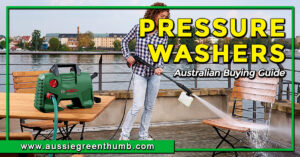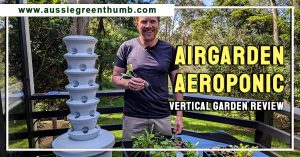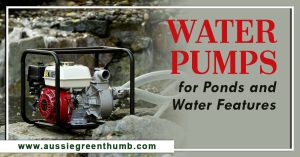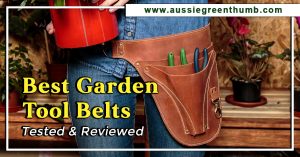The idea behind landscape fabric is to provide a barrier against weeds and to protect your precious topsoil. In effect, the most natural way to keep your topsoil intact is to allow weed coverage. But if you intend planting an area out in the future the last thing you want to do is weed an area twice – or more.
Weed barriers come in all types and sizes. From the cheap and organic, that can eventually be turned back into your garden beds, to the more expensive landscape fabrics that can keep an area weed-free for years. It truly depends on which weed barrier option you require for any particular job.
So here is a list of weed barrier options to try in your garden.
More...
5 Weed Barrier Options to Choose From
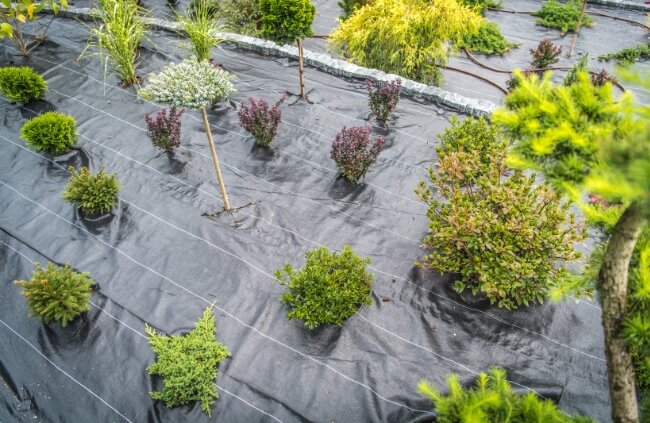
Cardboard or Newspaper
Layers of cardboard or old newspaper provide a great organic option for reducing weeds. For newspaper it’s best to lay 5-10 sheets on top of each other directly onto your bare soil, pre-moistened so they sit flat, and then cover with a layer of sawdust or pea straw. The same can be done with cardboard but a single layer should suffice.
After 12 months or so, the cardboard or newspaper – along with the sawdust or straw – should have broken down enough to allow it to be dug back into the soil. This provides more nutrients and texture to your soil even after it’s performed its job of controlling weeds.
Old Carpet
If you’re renovating your home or have access to quantities of old carpet from your local flooring store, then this option is a very cheap solution to providing a weed barrier. It may not look pretty – especially if your remnants are different styles of carpet – but this can easily be hidden the same way as the newspaper/cardboard idea.
Alas, it’s not the most organic option as you can’t dig the carpet back into the soil – unless they’re wool or hessian based – and you must choose carpets that haven’t been glued down with adhesives. One benefit of carpet is that you can actually place it directly on top of weeds rather than pulling them up before you lay a landscape fabric.
Weed Barrier
Barring the first two choices there are a myriad of inexpensive landscape fabric options that are easy to source. One such option is this Dewitt Weed Barrier Fabric. It’s a woven polypropylene fabric that conserves moisture and prevents seed germination. These are very common in commercial landscape operations.
These are a great option for most smaller gardens because of the size of the rolls and how easy they are to lay.
Weed Mat
For landscapes that have garden rows that aren’t wide, weed mat is a great option to lay between them. While it is still a barrier to weed control, weed mats can be used specifically in areas where they are needed rather than as a “blanket” type approach.
Landscape Fabric
Commercial operations tend to use landscape fabric as their source of weed barrier. This is also helpful for larger gardens that have areas beyond the norm. The benefits of landscape fabric are the colour choices available. These can tie in with your garden colour scheme or be subdued enough to blend in with the natural look of your garden – and don’t forget the anchor pins.
Certainly, the colour of your landscape fabric is not the most important attribute but, honestly, most of these products have similar characteristics and price determines the strength and size options.
So, if you’re wanting to save dollars and get an effective product, trial small areas within your garden first. A landscape fabric is only as good as its application and what works in one garden doesn’t necessarily work in another.
Using Weed Control Fabric in the Garden

Weed control fabric, or landscape fabric as it’s known in the industry, is one of the new tools used to prevent weeds from growing in our garden beds. They’re a permeable mat that lays over the soil and inhibits weed growth while still allowing all the nutrients to be accessed by your plants.


Get Your Free Guide:
Master Growing Australian Natives eBook
A Must Have Complete Guide for Every Australian Garden
Get Your Free Guide:
Master Growing Australian Natives eBook
A Must Have Complete Guide for Every Australian Garden
If you’re like most then you have probably tried a dozen methods to keep weeds at bay: remnant carpet under the rose’s bushes, thick layers of mulch or sheets of black plastic laid beneath wood chips. While these may have offered some assistance, they certainly weren’t bullet-proof and you still hadn’t solved all the issues.
The problem with the carpet and the plastic is that while they kept weeds at bay, they also failed to let water, oxygen and fertilising nutrients through. Mulch, on the other hand, allowed water to weep through but needed replenishing over time and often came with weed seeds in the actual mulch itself. There was certainly a need for a product that could offer the best of both worlds.
Fortunately, weed control fabric seems to be the solution. The fabric is a spunbond polypropylene that is permeable for water, air and nutrients but will still inhibit weed growth. Many landscapers are using it in their projects because of its effectiveness but also because the fabric has proven to offer a 12-20 year life-span.
The weed control fabric can be laid directly on the soil with slits cut as openings for plants. It doesn’t need to be covered with anything, although if you choose it can be covered with mulch to hide it. If you don’t cover it, then it just requires attaching to the soil with some Fabric Pins.
The deluxe models Dewitt’s 4.1oz Fabric and Dalen’s Weed Control Fabric both offer a longer life-span – up to 20 years. They are more expensive than the spunbond versions because these are woven with reinforced fibre for extra durability.
If you don’t like the look of weed control fabric covering your soil then rather than cover them with an organic mulch you could spread landscaping gravel, coloured glass, or blue metal that will last as long as the fabric. Don’t get sucked into using decorative pebbles though.
Over time the fabric will break down so if you’re planning to keep moving and reusing it your best to keep it out of direct sunlight. Covering your landscape fabric up with a material mentioned above will make it a little harder to transfer but will prolong its useful life.
Use Mulch Mats for a Weed-Free Garden
Gardeners love perennial plants but dislike their perennial battle against weeds. Weeds, including grasses growing across paths and into beds, don’t just ruin the look of your garden path, flowerbed, or vegetable garden.
They use up nutrients and water and compete against the desirable plants for root room and light, reducing yields of fruits, vegetables, and blooms. With their rapid rate of growth, they can quickly choke out bush and tree seedlings, too.
Gardeners need a strategy in controlling where plants grow – including desirable plants such as spearmint, verbena, and lamb’s ears. We love their spreading habits, but when they spread out-of-bounds, they can become a problem.
Mulch mats are the best way to control where plants can grow, and where they can’t, completely without chemicals, plant hormones, or poisons. Once they are in place, weeds are blocked out.
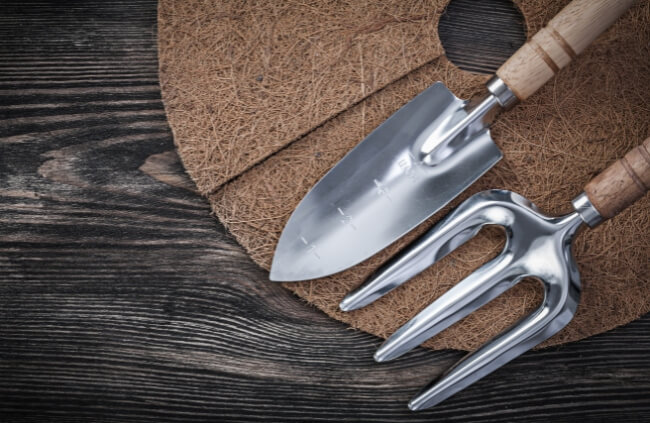
What is a Mulch Mat?
But what exactly is a mulch mat? Usually sold in rolls, it is a physical barrier that is placed on the prepared soil. There are mats for every need, from light-duty for small, new gardens, to heavy-duty for large, problem, or commercial gardens.
What are Mulch Mats Made Of?
Mulch mats can be made from numerous materials, most often recycled rubber, and non-woven man made cloth, much like a reusable grocery tote. There are even biodegradable mats and mats that come in circle shapes for placing around tree trunks, and long, narrow strips for the edges of beds.
Water, air, and micronutrients can easily go down through the mulch mat into the soil, but weeds, grasses, and invasive plants can’t push up and through the mat.
How to Prepare and Place Mulch Mats?
Starving weeds and grasses for light and room sounds wonderful, but you may be wondering how good plants can grow when using these mats. It’s all the preparation and placement of the mats.
For new flowerbeds or garden areas, the soil is worked and properly prepared – tilled, smoothed, levelled, fertilised, and watered – and the mulch mat is placed over the growing area.
In these types of annual gardens, biodegradable mulch mats and the lightweight mulch mats are the way to go since vegetable crops typically need to be rotated from spot to spot and can’t be grown in the exact same place each year.
Some gardeners use the “row method.” This is the easiest way when directly sowing a garden. They like to leave a gap of two or three inches of uncovered soil between their vegetable or cutting garden rows, and place their seeds or seedlings there.
Others, who are going to place seedlings into the garden, completely cover the area, overlapping the rows of mulch matting slightly, cut “X’s” where seedlings will be placed, and then place seedlings directly in those spaces.
Still other gardeners, mainly battling grass, just place the mulch mat along the perimeter of the garden area, and in this case, the heavier recycled rubber mat may be the best choice.
When heavy, recycled rubber mulch mats are used, or thick biodegradable mats are chosen, no additional traditional mulch material, such as shredded bark, needs to be applied on top of it.
But when lighter-weight mulch mats are used, such as the non-woven poly material, then gravel, bark mulch, composted leaves and paper, or pine straw needs to be placed atop the mats. This will both hold down the mats in high winds, and protect it from UV light, which causes the mat to degrade and not last for as many years.
Adding Mulch Mats in Flower Beds
It’s easy to retrofit flower beds with mulch mats. Rake out any existing mulching material, such as composted leaves, shredded bark, cocoa-fibres, or gravel. Place the mulch mat around existing plants, cutting, and piecing as needed, and overlapping if using the lightweight mulch mat.
It’s best to use the lightweight mat within the garden, and edge it with the heavier mat. Make sure to push the mulch mat up around the trunks of bushes and specimen trees in your garden.
If you like to intersperse annuals among your regular perennials, use the same method for planting seedlings in a vegetable garden, by cutting an “X” into the lightweight mulch mat, or a small circle out of heavyweight mat, and place the plants in those areas only. Replace your mulch, and you will find you have very little weeding or edging to do for years to come.
Trees planted out in the lawn really benefit from having a circular mulch mat placed around them. The circle has a slit cut into it, letting it be slipped around the young tree. It looks just like shredded bark, adding beauty while keeping grass from growing near the tree.
For odd-shaped areas – for example, when planting three small trees together in an “island” effect — use the lighter-weight non-woven mat, and place shredded traditional mulch over it.
Mulch mats are easy to use, require no upkeep during the growing season, and dramatically increase yields by keeping weeds away from your valuable plants. More time can be spent enjoying the garden, instead of hoeing, weeding, and pulling grass.
Published on June 7, 2023 by Gary Clarke
Last Updated on September 9, 2025

